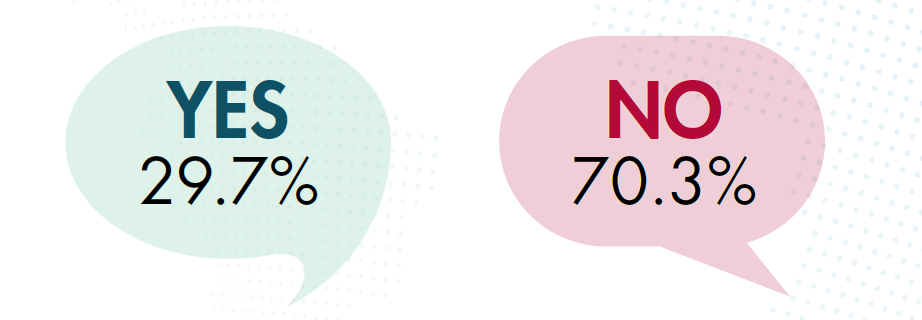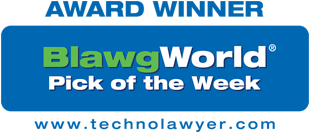Although law firms often talk about innovation, fewer than a third have actually tasked someone within the firm with the responsibility for driving innovation.
That is among the findings of a new survey, the 2018 Aderant Business of Law and Legal Technology Survey. published today by Aderant, a global provider of business management software for law firms.
When firms were asked whether they had specifically tasked anyone with responsibility for innovation, 29.7 percent answered yes. Large law firms of 500 or more lawyers were more than twice as likely to have such a person, with 55.9 percent answering yes.

Whether firms have tasked anyone with innovation, by size.
Firms were also asked about which technologies had the greatest impact on efficiency. The top five technologies that firms said had either a moderate or high impact on efficiency were:
- Document management, 90%.
- Time and billing management, 88%.
- Financial management or ERP, 73%.
- Mobility and mobile apps, 70%.
- Business intelligence, 70%.
Technologies found to have the least impact on efficiency were enterprise search, project management, task management, and customer relationship management.

Technology concepts with the greatest potential to drive efficiency.
One interesting question that I do not recall having seen before in a technology survey asked respondents to identify the technology concepts — as opposed to specific technologies — they believed had the greatest potential to drive efficiency. The top five:
- Automating routine tasks, 64.2%.
- Workflow automation, 54%.
- Analytics, 47%.
- Integration of existing law firm systems, 34%.
- Mobile access to law firm systems, 24.1%.
Given the legal industry’s focus of late on artificial intelligence, it may come as a surprise that only 16.1% identified AI as having the greatest potential to drive efficiency. Other lower-ranking concepts were:
- Predictive analytics, 7.3%.
- Cloud-based solutions, 8.8 percent.
- External collaborative tools, 17.5%.
- Internal collaborative tools, 18.3%.
Although cloud computing did not rank high as a concept driving efficiency, firms seem to be more open to the cloud, the survey found, with only a quarter saying they were not adopting cloud computing. While surveys often ask about barriers to cloud computing, this survey turned that around and asked what was driving cloud adoption. The top five factors:
- Provides better disaster recovery, 50.5%.
- Less costly compared to on-premise solutions, 39.1%.
- Augments business continuity, 29%.
- Better cybersecurity, 27.5%.
- Improving features and functionality in cloud products, 25.4%.
In addition to innovation and technology, the survey looked more broadly at the business of law. It found that the legal business climate is improving, with 57 percent of respondents saying that business at their law firm is better or much better than it was in the last 12 months. The larger the firm, the more likely it was to say its business was better.
The top challenges facing firms, the survey found, are pricing, cybersecurity, operational efficiency, technology adoption, and competition.
Alternative fee agreements continue to be used in relatively few matters. Most respondents reported having 20 percent or less of client accounts structured under any arrangement other than the billable hour.
The survey was completed by 138 business and legal professionals at law firms all over the world. Most respondents were not lawyers, but instead held business, technology or financial roles. Ninety-eight percent were from firms of 25 or more lawyers, and 25 percent were from firms of 500 or more lawyers.
The full survey can be downloaded at no cost and with no registration required: The 2018 Aderant Business of Law and Legal Technology Survey.
 Robert Ambrogi Blog
Robert Ambrogi Blog
